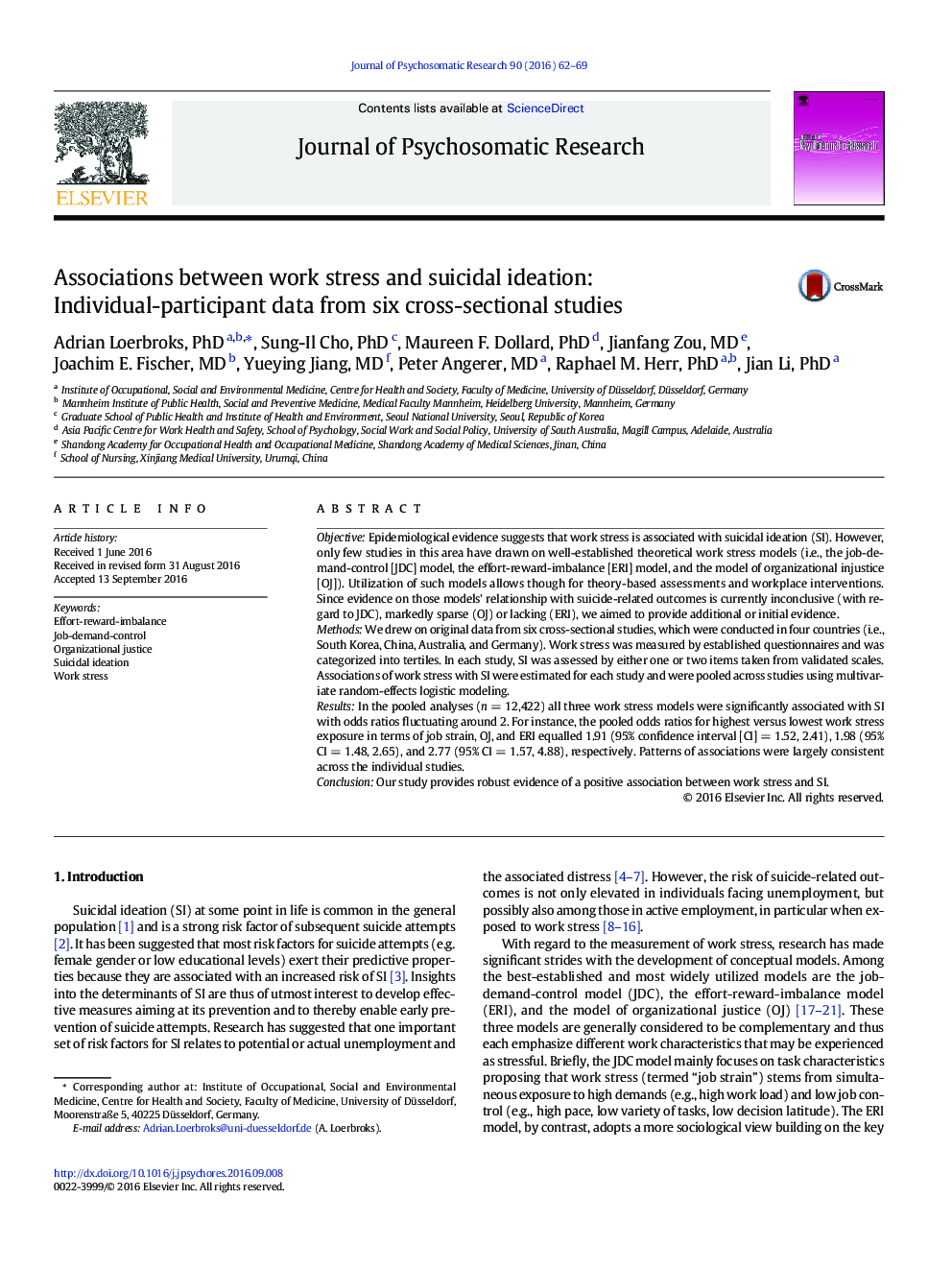| Article ID | Journal | Published Year | Pages | File Type |
|---|---|---|---|---|
| 5046125 | Journal of Psychosomatic Research | 2016 | 8 Pages |
â¢Evidence on the link of work stress with suicide-related outcomes is inconclusive and sparse.â¢We aimed to quantity those associations based on original data from six epidemiological studies.â¢We considered job-demand control, effort-reward-imbalance, and organizational injustice.â¢All work stress models were significantly associated with suicidal ideation.â¢Associations were largely consistent across the individual studies.
ObjectiveEpidemiological evidence suggests that work stress is associated with suicidal ideation (SI). However, only few studies in this area have drawn on well-established theoretical work stress models (i.e., the job-demand-control [JDC] model, the effort-reward-imbalance [ERI] model, and the model of organizational injustice [OJ]). Utilization of such models allows though for theory-based assessments and workplace interventions. Since evidence on those models' relationship with suicide-related outcomes is currently inconclusive (with regard to JDC), markedly sparse (OJ) or lacking (ERI), we aimed to provide additional or initial evidence.MethodsWe drew on original data from six cross-sectional studies, which were conducted in four countries (i.e., South Korea, China, Australia, and Germany). Work stress was measured by established questionnaires and was categorized into tertiles. In each study, SI was assessed by either one or two items taken from validated scales. Associations of work stress with SI were estimated for each study and were pooled across studies using multivariate random-effects logistic modeling.ResultsIn the pooled analyses (n = 12,422) all three work stress models were significantly associated with SI with odds ratios fluctuating around 2. For instance, the pooled odds ratios for highest versus lowest work stress exposure in terms of job strain, OJ, and ERI equalled 1.91 (95% confidence interval [CI] = 1.52, 2.41), 1.98 (95% CI = 1.48, 2.65), and 2.77 (95% CI = 1.57, 4.88), respectively. Patterns of associations were largely consistent across the individual studies.ConclusionOur study provides robust evidence of a positive association between work stress and SI.
